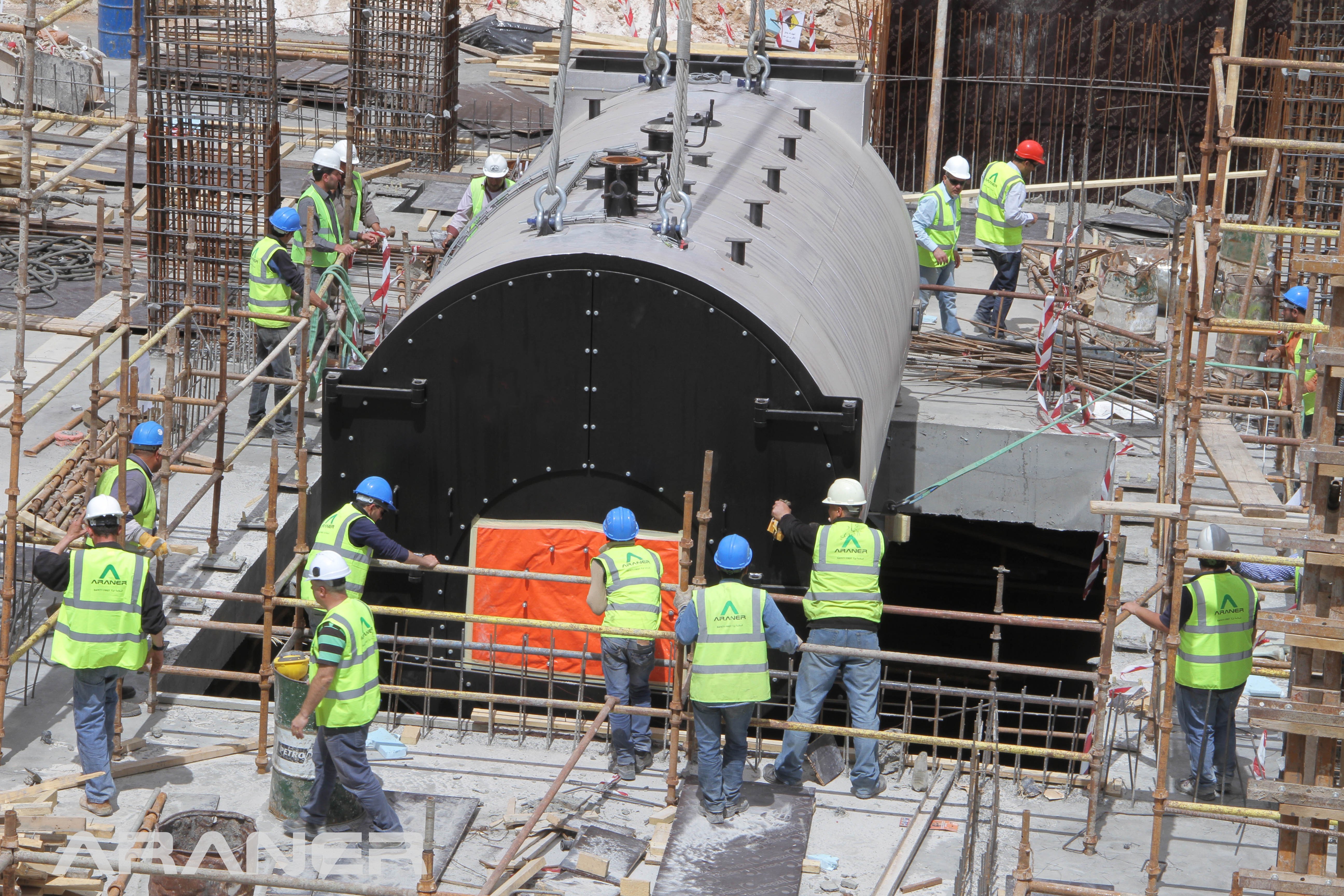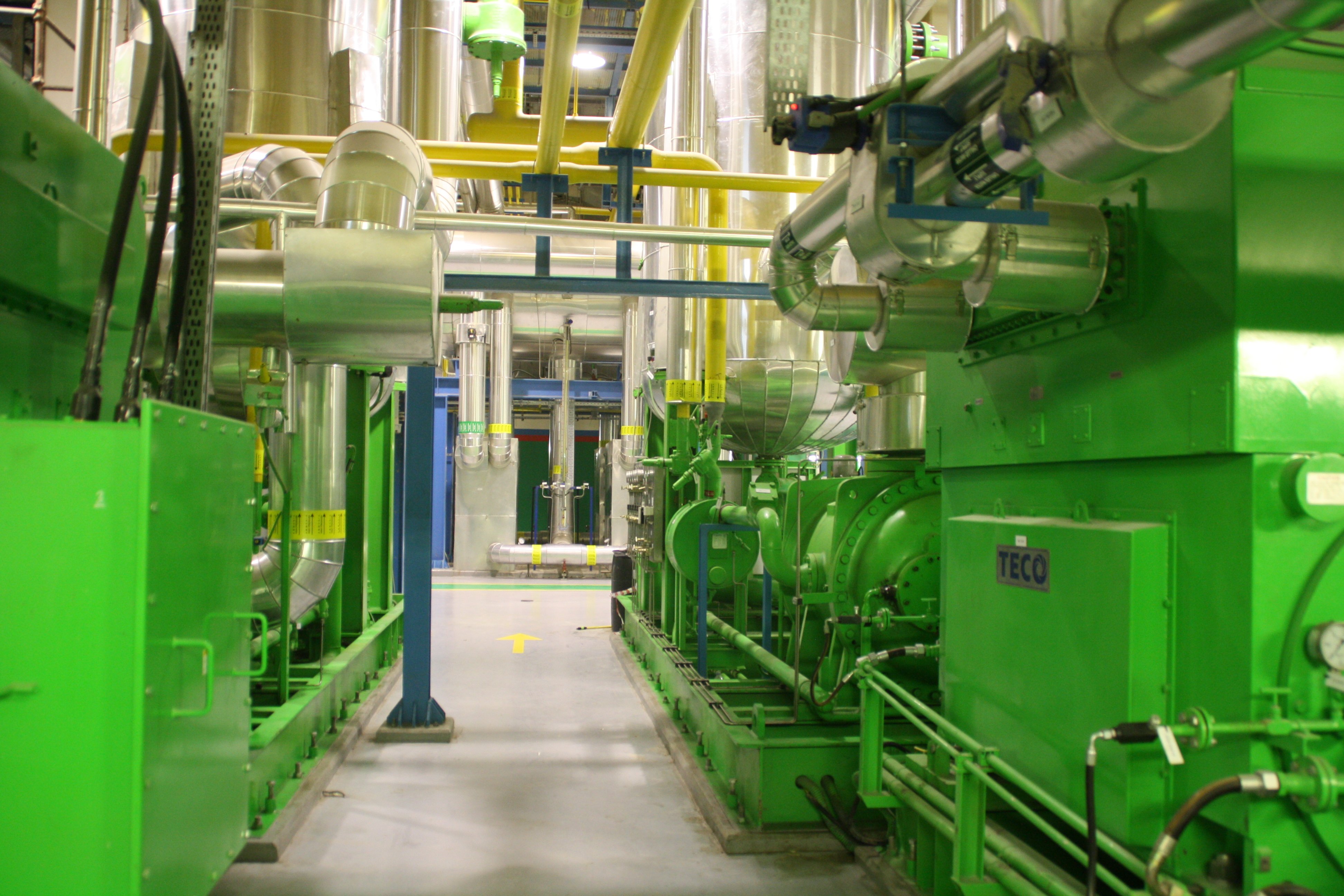District heating and cooling has quickly become one of the most prominent alternatives when it comes to efficiently managing energy production and distribution. Driven by the economical and sustainable advantages of this sort of centralized system, commercial, industrial and individual installations of district heating and cooling have multiplied in the past decades.
But what exactly are the advantages of district heating and cooling and what sort of installation should be chosen to maximize them? Keep reading to find out.
What are district heating and cooling systems
District heating and cooling systems are a model for energy generation and distribution that is based on using a central location for energy creation that is then disseminated through pipe systems.
- District heating generates and distributes heating from a number of sources. While the model used to be based on burning fossil fuels, today the resurgence of district heating is driven by this system’s capability of using alternative energy sources such as geothermal heating, heat pumps, central solar heating, or heat from waste incineration, among others.
- District cooling distributes thermal energy in the form of chilled water obtained through a central cooling plant.
Both models, and their combination in heating and cooling solutions, stand out today as an alternative system that is helping cities decarbonize their energy consumption and production, as well as bringing a number of other economic and environmental benefits.
It may interest you: Will the DH market contribute to the building decarbonisation?
What does an efficient heating and cooling system look like?
As mentioned above, district heating and cooling structures can take multiple shapes, depending on the type of energy source that is chosen.
This means that, in order to achieve maximum efficiency, each project must be individually considered, examining what are the best possibilities for each system.

However, there are two key district heating and cooling models that stand out as offering high efficiency:
4 pipe or 6 pipe heat pump systems
The use of a reversible heat pump means both heating and cooling are available through a system that’s been proved to provide great efficiencies.
Heat pumps are used as an alternative to traditional boilers and electric heaters and use electricity to extract thermal energy. The choice of free, renewable energy sources for heat pumps will mean this system provides the maximum efficiency with optimized operational and sustainable costs.
For instance, heat pumps may capture energy from sources such as industrial wastewater, groundwater, geothermal sources, air or seawater, among other elements.
It might interest you: Heat pumps benefits in District Heating system
Combined thermal storage tanks
The combination of DH systems with thermal storage tanks also represents an outstanding heating and cooling solution in terms of efficiency. In fact, this model is being specially helpful in managing intermittent energy produced by renewable sources
In short, their role is to balance thermal and energy demand with the different energy production sources, so that a wide variety can be used.
This means the system accumulates thermal energy during off-peak periods, and then releases it during high-demand periods. The two benefits of this include:
- Renewable sources such as solar or wind energy can be managed more efficiently
- Surplus thermal energy is not wasted, but stored for a later use

Advantages of an efficient district heating and cooling
Moving away from fossil fuels
An important step in moving away from fossil fuels. While district energy traditionally relied on fossil fuels for the creation of energy, current technologies allow for the incorporation of alternative energy sources. Among these options, the possibility of using recycled heat is particularly exciting, as it both minimizes CO2 emissions and reduces energy costs, taking efficiency to the maximum.
In fact, the minimizing of CO2 emissions means district heating and cooling have provided significant contributions to decarbonize large cities around the world. For instance, the Chinese city of Anshan expects to incorporate a district energy model based on heat recovery that will help reduce 1.2 million tons of burning coal.
Optimizing energy consumption
District heating and cooling allow for a reduction in primary energy consumption that ranges between 30 - 50%. This is especially true in the case of using heat pumps and combined thermal storage tanks, which make the most of energy that would otherwise be wasted.
Minimized operational costs
Operational efficiency means the cost of heating and cooling in buildings declines.
Reduced costs
Reduced costs are also achieved in energy generation. District energy systems mean economies of scale can be activated and locally-available energy sources can be employed. District heating and cooling thus becomes a remarkably diverse model that combines different energy sources for optimal efficiency, and minimizes the need for fossil fuel imports. Green and circular economies are activated and the new key figure of the “prosumer” takes center stage.
Reliable service
Heating and cooling through a centralized location that avoids fossil fuels translates into more predictable, safe and reliable energy production. Issues such as peak demand problems, weather inclemencies and other unexpected cases can be controlled in an easier manner. Cities develop their own locally-managed models for energy production, matching it to their real demand.
Architectural benefits
Architectural benefits also arise. Heating and cooling equipment are kept outside individual buildings at a centralized location, leaving extra space and eliminating other inconveniences such as excessive noise.
Discover: Abdali District Heating and Cooling project
Why choose Araner for your district heating and cooling system
At Araner we work to become your reliable partner for implementing district heating and cooling solutions.

As such, we can help you develop:
Heat pump system
Heat pump systems that translate into remarkable sustainable and economical benefits. The available heat pump models include:
- Screw and reciprocating heat pump (Ammonia/HFC/HFO refrigerants)
- Single/double effect absorption heat pump (LiBr-H2O)
- Large scale centrifugal heat pump (HFC/HFO refrigerants)
District heating plants
District heating plants in combination with TES (Thermal Storage Tank) plants. We provide project assessment and implementation in order to guarantee enhanced peak heating capacities. Some of the technologies we employ include:
-
- Sensible or latent heat
- Daily or seasonal accumulation
- Centralized or distributed location from the network
As the key technological partners of commercial, municipal and industrial players, we strive to offer a few exclusive services that have proven to work in the benefit of each project:
- We adapt our products and solutions to generate personalized projects that respond to each partner’s needs
- We rely on a dynamic R&D sector always on the lookout for innovative, more efficient solutions. This includes research to promote lower flow temperature to networks, the use of waste heat recovery, options for low-cost electricity time periods and the search for models that use thermal energy storage.
- We offer great price ratios compared to market standards
Want to learn more about Araner’s district heating and cooling solutions? Get in touch to speak to our technical team and see how we can help you achieve efficiency in your heating and cooling project.










